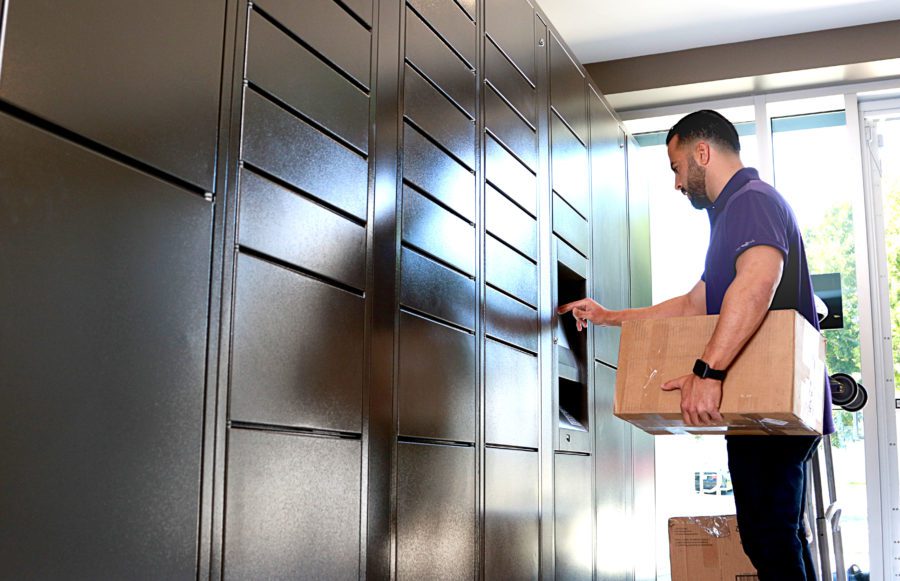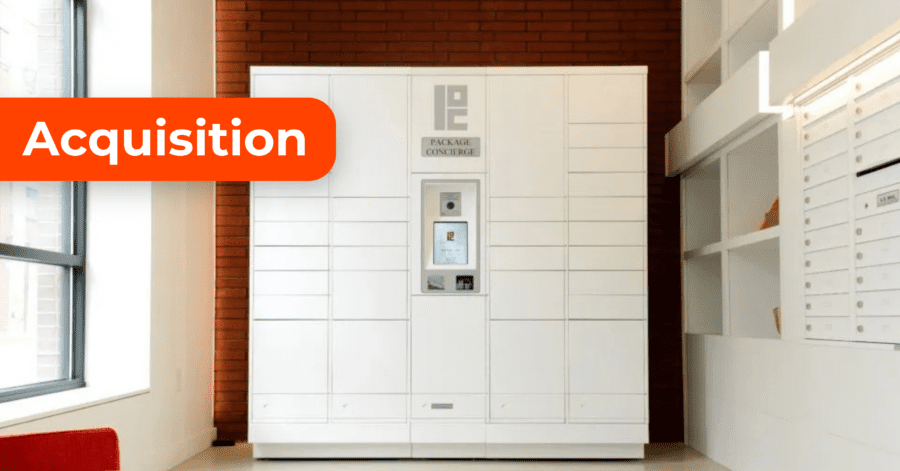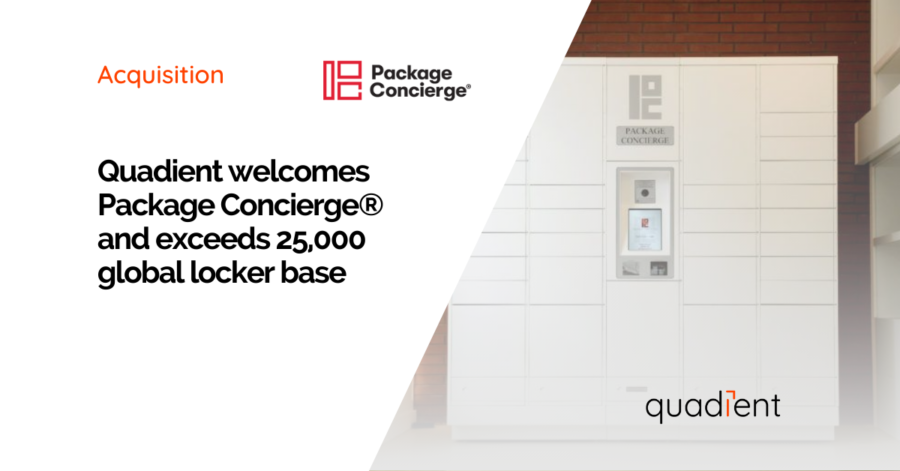Commercial
How to Improve Employee Satisfaction
Written by: Parcel Pending
9 Min Read
Published: April 10, 2019
Updated: March 29, 2023
In 2007, a WPI analytical study polled some 100,000 workers to create a comprehensive statistical analysis of workplace performance. The research sought to discover the underlying motivators and detractors for workplace performance and productivity. In short, it found that a workplace environment can have a tremendous impact on an employee’s ability to focus and remain motivated.
Now, while should seem intuitive, many business owners still neglect to invest the time or money into making improvements to their employee’s workspace.
If you are a business owner or office manager, you may need to rethink the way you view the topic of office upgrades, renovations, or amenities. Rather than seeing them as excesses or merely gilding, think of them as investments in employee happiness and satisfaction. While you may balk at the initial costs, countless studies have shown that the return on investments are real and manifold, especially when it comes to worker retention and employee productivity.
To that end, below we will discuss office improvements you can make that can and will benefit both your staff members and the company.
Ways to Improve Employee Satisfaction
Ergonomic Furniture Matters
During your average workday, an employee will spend roughly 6 hours at their desks staring at their computer screen. While trendy furniture may be fun, it is crucial that you focus on providing your staff members with ergonomic furniture to help reduce unnecessary strain or injury.
Common workplace injuries caused by poor support and posture include:
- Neck strain
- Shoulder issues
- Carpal tunnel syndrome
- Lower back pain
Each one of these maladies can either detract from an employee’s ability to focus or even cause them to miss work. Bad slumping posture is the underlying cause of many of these problems, so to prevent such issues, invest in ergonomic chairs and desks or consider installing standing desks for those who want them.
By providing support and minimizing strain, you help your employees stay attentive to their work. Further, you illustrate to them that their well-being, comfort, and ability to reach their peak performance matters to you. By focusing on their health, you demonstrate that you want them there and they are worth the investment.
Rethink the Way You Receive and Store Mail and Packages
Any business will typically receive mail, bills, deliveries, and packages daily. On top of that, approximately 50% of all employees make online purchases at work. Currently, there is a nationwide trend where employees are increasingly making the decision to send their orders to their workplace in order to prevent “porch pirates” from stealing their packages. While this keeps their packages safe, it also leads to an increasingly larger number of items that have to be received, organized, and stored at the office. Naturally, this causes undue strain on employees, property managers, and mail rooms.
A solution to this problem is to install self-service electronic parcel lockers, such as those offered by Parcel Pending. Smart lockers reduce the strain and responsibility of managing packages by providing a simple and expedient way to either deliver or retrieve packages. These lockers reduce your operational costs by simplifying the process for receiving, logging, sorting and delivering a package as well as reducing package liability caused by missed deliveries or theft.
Smart lockers can improve your employee’s happiness and satisfaction by:
- Making package delivery and retrieval fast and worry-free
- Notifying them when their package has arrived
- Accepting packages from any courier or delivery service
- Keeping packages safely secured, even those that require a signature
Paint Your Office Blue
Psychologists have known for years that certain colors can have material effects on both a person’s body and brain. Such influences can affect a person’s:
- Communication
- Creativity
- Emotions
- Focus
- Health
- Productivity
- Stress levels
The science underlying these effects is linked to the way our brain converts light wavelengths into electrical impulses. The impulses are sent to the hypothalamus, which is responsible for our hormones, activity levels, and endocrine system. Simply put, certain hues trigger an instinctual reaction that can subtly alter your employees’ moods.
Scientific consensus seems to agree that blue is the optimal color to use as the primary base influence on your office space. Vanessa Arbuthnott’s infographic is a useful tool that quickly surmises which colors are best for various settings. Blue seems to affect and represent:
- Serenity
- Intelligence
- Protection
She states, “It has been proven that students exposed to blue before undertaking an exam were more successful and achieved greater results; however, do not overdo it. Too much blue can become cold and make people feel unwelcome. Be sure to balance this with warm undertones.” Blue is ideal for bedrooms and offices, so consider this the next time you decide to repaint the office.
Break Rooms
If you are designing an office space, it is critical that you set aside an area for your employees to relax and take a break. Studies resoundingly show that practically no one can remain at peak focus levels for 8 hours straight without any interruption. Because of this, it is important managers encourage employees to take time to rejuvenate on a daily basis. According to author Meg Selig, taking regular breaks accomplishes the following:
- Benefits your physical and emotional health – Constant sitting increases a person’s risk of heart disease, diabetes, depression, and obesity.
- Prevents decision fatigue – A person who is constantly under mental strain making critical decisions will inevitably have a mental decline, leading to simplistic decision making, wasted time, and lack of focus.
- Improve productivity – Going long stretches without any breaks causes stress and mental exhaustion. Taking breaks gives the mind a chance to rest and actually increases creativity.
In his article, Why Your Brain Needs More Down Time, Ferris Jabr writes, “Downtime replenishes the brain’s stores of attention and motivation, encourages productivity and creativity, and is essential to both achieve our highest levels of performance and simply form stable memories in everyday life…Moments of respite may even be necessary to keep one’s moral compass in working order and maintain a sense of self.”
If you want your employees to stay happy and productive, you have to give them a place where they can relax, talk with coworkers, have a coffee or a snack, or unwind for a few minutes. Comfy chairs, bright colors, snacks, games, and other distractions can help them take their mind off of work for a few minutes, recharge, and get back in the game.
Add Some Plants
While you might think that plants are merely decorative, multiple studies have shown that plants in an office not only improve the air quality but also provide various psychological benefits. A 2014 study by the University of Exter discovered that plants increased employee productivity by 15%. The study concluded, “There was a significant, negative association between nature contact and stress and nature contact and general health complaints. The results indicate that as workday nature contact increased, perceived stress and generalized health complaints decreased.”
A 2010 study from the University of Technology in Sydney discovered that by adding a few pot-plants to an office space, they measured significant reductions in CO2 and VOC levels. These changes led to significant reductions in employee stress, anxiety, depression, anger, hostility, and fatigue, as do the addition of natural remedies like CBD for anxiety, says Justin Cooke of Daily CBD. So, if you are unsure what type of plants to add, consider any of the following easy-to-care-for indoor plants:
- Aloe
- Bamboo
- Boston Fern
- Corn plants
- English Ivy
- Parlor Palm
- Peace Lily
- Rubber tree
- Snake plant
Upgrade the Office Equipment
According to UK based tech company, Sharp, the average UK office worker wastes at least 21 days each year due to slow or inefficient tech, which is more than the average Brit’s annual vacation time. Managing director Stuart Skyes commented on this saying:
“Technology is supposed to make our lives easier and help us to work faster, however, in the real world, out-of-date and hard to use technology often slows people down, forcing them to waste time. This dead time can mean lost opportunities, lost profits and even lost employees. Businesses must wake up to the importance of connected technologies that work in sync with their employees’ changing needs and allow them to get the best out of their team, as well as making for a more motivated, more productive workplace.”
As the saying goes, a craftsman is only as good as his tools. While you do not need to upgrade your office’s tech annually, computers and other such hardware should be updated at least every 4-5 years, before the technology they use becomes obsolete. Bells and whistles are not necessary; however, providing your workers with current tech helps to optimize your office, increase productivity, reduce frustration over buggy or slow machines, and improve overall employee happiness levels.
If you are unsure what is out of date or what the office needs, directly ask your employees for suggestions, complaints, or ideas. Every year there are new tools released that are intended to maximize office productivity and workflow. By increasing engagement with your staff members, you illustrate to them that you care about their input and want to help them work smarter rather than harder.
The Kitchenette
Similar to break rooms, it is critical that you create spaces where your employees can get away to eat their lunch or break for a snack. Approximately 1 in 2 employees will choose to eat their lunch at their desk so they can continue working. Doing so prevents them from having time to relax and recharge. By providing them with a place to eat, you create a space where they can share a meal and conversation with coworkers.
Lunch is one of the ideal times for your employees to chat, laugh, bond, and become a team. As a boss, it gives you an opportunity to get know them as a person outside of their job role; you have precious minutes to invest in them and discover who they are and what makes them tick. Such conversations can help you discover the best way to motivate and communicate with them when it comes to their work performance.
Take Pride in Your Space
In his best-selling book, the 12 Rules for Life: An Antidote to Chaos, Canadian psychologist, Dr. Jordan Peterson, provided young men and women with advice on how to improve and grow as people. One of his twelve rules to young people was simple, “Clean your room and make your bed.” At the beginning of each day, rather than allowing yourself to be overwhelmed by all of the things you have to do, organizing your workspace is a great way to focus your mind and set an example for the rest of the office.
Just about any workplace is filled with chaos, disorder, stress, and heaps of paperwork. By taking care of and maintaining your personal space, you help to create symmetry and tranquility out of the entropy. Further, such actions illustrate that you take pride in your workplace and the office itself. While you cannot fully control the cleanliness of the entire office, such a mindset can be infectious to your employees since humans naturally crave order.
Clutter tends to cause distractions, detracting from employee focus and productivity. Encourage your employees to spend ten minutes at the beginning or end of each day to ensure that their things are organized, filed away, and out of sight. If you do not already have cleaners, hire a cleaning staff to regularly clean and maintain the office. By showing your employees you care about your space and your office, you illustrate that they can take pride in the fact that what they are doing matters.
Focusing on Your Employees
If you want to improve employee satisfaction and productivity, investing in them often pays significant dividends. Employees can tell if their work or boss values them both as workers and as individuals. When polled, a substantial majority of workers state that they care more about loving their workplace than they do their salary. So, whether it be adding commercial parcel lockers or repainting the office in shades of blue, there are various steps you can take to make your employees feel valued and appreciated. Such actions provide you with a happy and motivated staff, which is a recipe for a successful and efficient business.



